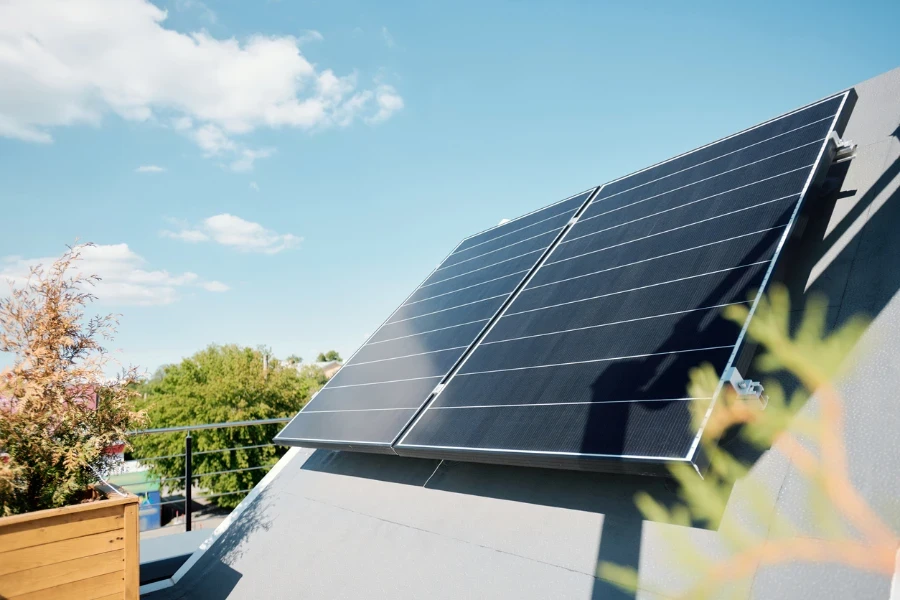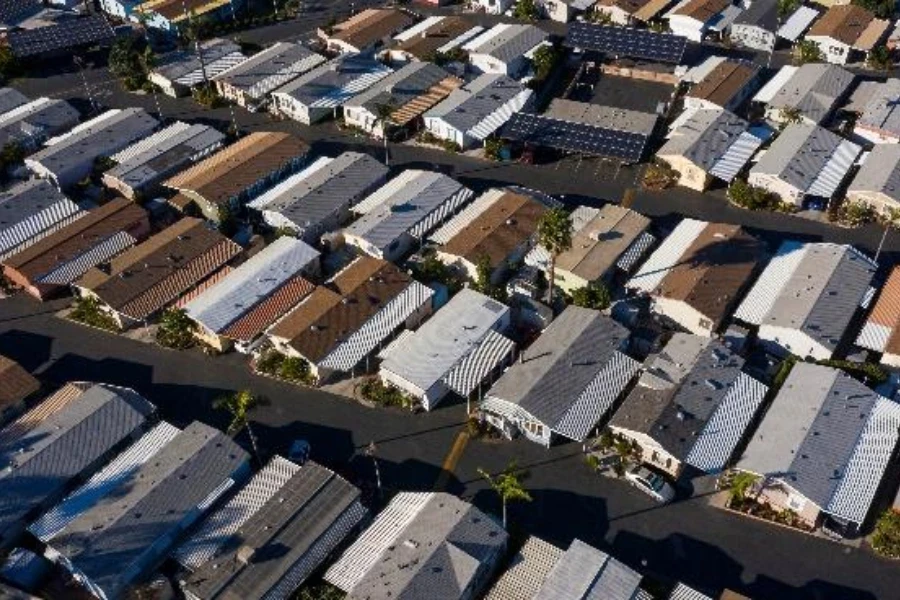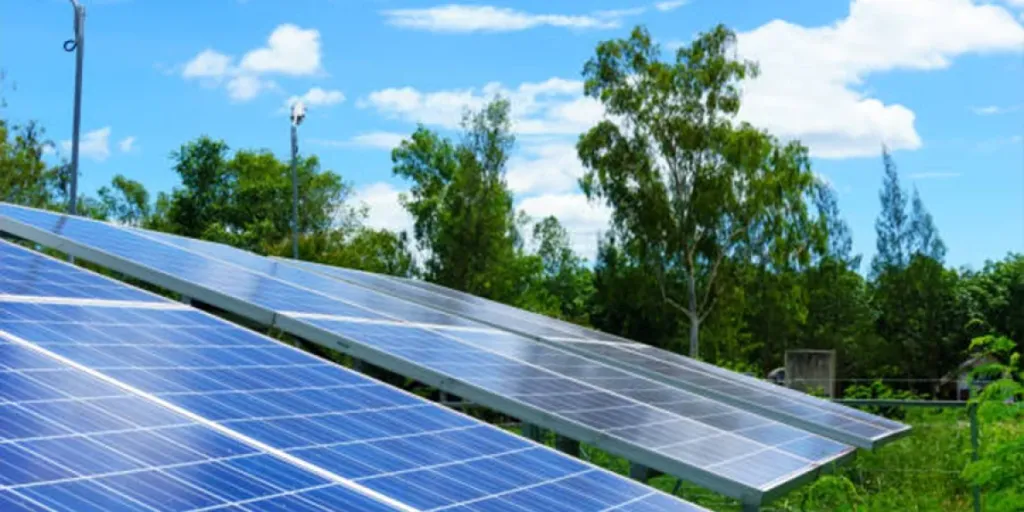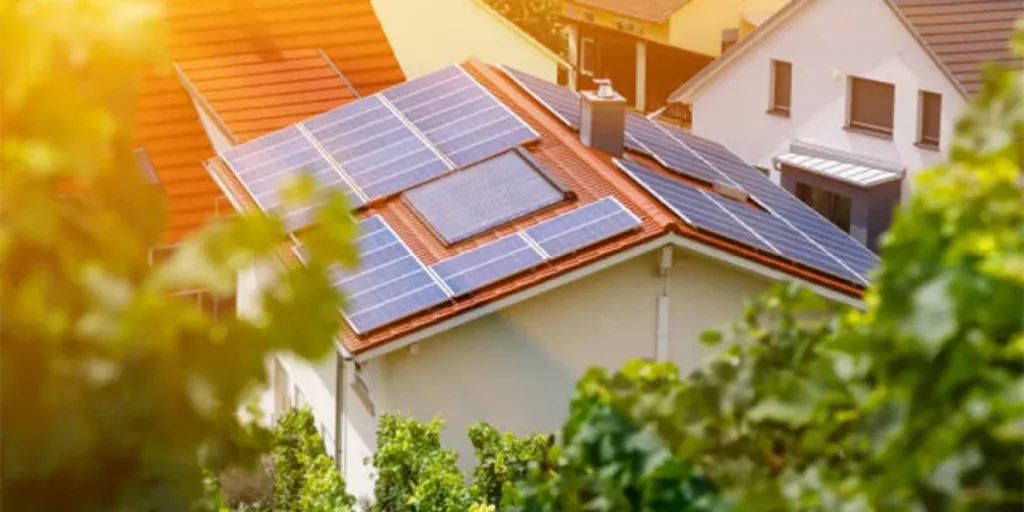Imagine an electricity solution that offers stable, sustainable, and cost-effective energy, ensuring that our lives and work are unaffected by traditional power grid failures, no matter whether in remote areas or urban centers. This is exactly what microgrids and off-grid applications can provide.
Here, we’ll cover the pros and cons of microgrids and off-grid applications, helping to determine if such systems are right for you or your business.
Table of Contents
What are microgrid and off-grid electricity supplies?
Further information about microgrid and off-grid applications
Challenges and solutions for off-grid solar power generation in remote areas
Successful cases of microgrid and off-grid solar generator projects
Future perspectives on the role of solar generators in decentralized energy systems
Summary
What are microgrid and off-grid electricity supplies?
Microgrids are small-scale electricity supply networks that can operate independently of traditional large-scale grids, or be connected to them. They usually include power generation resources, such as solar panels, wind turbines, small hydroelectric plants, or diesel generators.
The core of a microgrid is its intelligent management system and automation technology, which allows it to effectively control and allocate its internal generation and storage. Such systems are very flexible; once the main grid fails, microgrids can be “islanded,” i.e. supplied independently of the main grid, ensuring that power supply to critical areas is not affected.
They are particularly suitable for small communities, industrial parks, hospitals, schools, and many other small-scale settings, especially in areas where the grid is unstable or does not reach.
On the other hand, off-grid applications are independent energy systems or facilities that are not connected to the main grid. Such applications are commonly found in remote areas, small islands, mobile facilities, or anywhere that is difficult for the main grid to access.
Off-grid systems are completely independent of the external grid and are required to generate all the power they need independently. Due to the intermittent nature of renewable energy sources (e.g. solar, wind), such systems are often equipped with battery storage systems to ensure continuous power.
Off-grid applications require efficient energy usage and management strategies to ensure efficient utilization of energy and reduce waste. They usually play an essential role in outdoor activities, mobile homes, residential homes in remote areas, field monitoring equipment, etc.
Further information about microgrid and off-grid applications

The technical details and key technologies regarding microgrids and off-grid systems can be summarized like this:
Microgrids
Solar panels: Solar panels in microgrids typically utilize high-efficiency photovoltaic (PV) panels. These panels need to be optimally arranged based on geographic locations, angle of sunlight, and intensity to maximize energy capture.
Inverter technology: Solar panels generate direct current (DC), while microgrids typically run on alternating current (AC). Therefore, inverters are needed to convert DC to AC. An efficient inverter is critical to the overall energy conversion efficiency.
Energy storage: Because of the intermittent nature of solar power, microgrids often include battery storage systems to store excess energy. This ensures that the microgrid can continue to supply power even during periods of no sunlight.
Control systems: Intelligent management systems are at the core of microgrids and are responsible for optimizing power generation, storage, and energy distribution. This includes forecasting energy demand, regulating power generation, and managing battery charging and discharging.
Integration: The solar power system of a microgrid needs to be smoothly integrated with other energy sources (e.g., wind, diesel generators, etc.) as well as with the main power grid to ensure a reliable and efficient energy supply.
Off-grid systems

Solar panels: For off-grid applications, the key to solar panels is durability and efficiency. Since off-grid applications are often deployed in remote areas, solar panels must be able to withstand harsh environmental conditions.
Energy storage: Similar to microgrids, battery storage is critical in off-grid systems. These systems need sufficient storage capacity to cover energy at night or on cloudy days.
System sizing and optimization: Off-grid solar systems must be tailored to a specific energy source. This includes a precise calculation of the number of solar panels and energy storage capacity required.
Inverters and controllers: Inverters are equally important in off-grid systems. In addition, charge controllers are used to manage the charging and discharging of batteries to prevent over-charging and over-discharging.
Maintenance and reliability: Given the remote nature of off-grid applications, maintenance of the system needs to be simple and reliable. Therefore, component selection tends to favor solutions that require minimal maintenance and operate reliably.
In short, the design of solar power systems for both microgrid and off-grid applications requires taking into account efficiency, reliability, durability, and synergy with storage systems. Microgrid solar generator configurations focus more on integration with other energy systems and smart management, while off-grid solar power installations focus more on self-sufficiency, durability, and adaptability.
Challenges and solutions for off-grid solar power generation in remote areas
Implementing off-grid solar power in remote areas is challenging due to harsh environmental conditions affecting equipment durability, the difficulty of accessing and maintaining systems in isolated locations, and the high initial costs of setup and installation.
Challenges
Harsh environmental conditions: Remote areas often confront extreme weather, which can affect the efficiency and durability of solar panels. Strong winds, heavy snowfalls, and extreme temperatures can cause damage to equipment.
Hard to maintain and repair: Due to the remote location, regular maintenance and repairs become difficult, which may lead to system downtime or loss of efficiency.
High initial investment costs: Setting up an off-grid solar system requires a large upfront investment, which can be a barrier for remote communities or individuals.
Energy storage and management: The intermittent nature of solar power requires robust energy storage solutions, and these are often costly and complex to manage.
Lack of technical expertise: Remote areas may lack local expertise in installing and maintaining solar systems, leading to reliance on external providers.
Regulatory and policy obstacles: In some regions, there may be a lack of policy or regulatory frameworks to support the implementation of off-grid solar systems.
Solutions
Durable and efficient technology: Testing different solar panels and modules designed to withstand harsh environmental conditions can improve the long-term reliability and stability of the system.
Remote monitoring and maintenance: Implementing a remote monitoring system allows for proactive maintenance and rapid troubleshooting, reducing the demand for frequent site visits.
Financial subsidies: Governments and NGOs can provide subsidies, grants, or favorable loan terms to lower the financial barriers to installing off-grid solar systems.
Innovative energy storage solutions: Adopting advanced battery technologies and energy management systems can optimize energy storage and usage, making systems more efficient and economical.
Policy and regulatory support: Advocating for and implementing policies that support the deployment of off-grid solar systems.
Hybrid systems: Combining solar with other renewable energy sources, such as wind or micro-hydro, especially in areas with variable sunlight availability, can ensure a more stable energy supply.
Successful cases of microgrid and off-grid solar generator projects
Microgrid projects in California, USA

Microgrid programs are widely used in California, especially in areas threatened by wildfires. For example, the campus microgrid at the University of California, San Diego (UCSD) is a typical case study that combines solar power, natural gas, and an advanced energy storage system that provides the campus with an efficient and reliable power supply.
Off-grid solar projects in Africa
Many countries in Africa, such as Kenya and Tanzania, have widely popularized off-grid solar energy systems in remote areas. These systems not only provide reliable electricity to residents but also support the improvement of education and health services, which has a positive impact on local socio-economic development.
Future perspectives on the role of solar generators in decentralized energy systems
A significant source of renewable energy: Solar power, as a clean and renewable source of energy, will play a central role in decentralized energy systems. As technology advances and costs decrease, the popularity and application of solar power will continue to expand.
Facilitating the democratization of energy: Solar power generators can be installed in homes, businesses, and even mobile facilities, enabling localized energy production. This not only reduces reliance on a centralized grid but also empowers users to take more control over their energy supply.
Promoting smart grids: The combination of solar generators and smart grid technology will make grid operations more efficient and flexible. Through real-time data analysis and management, energy distribution can be optimized to improve the overall effectiveness of the system.
Fostering development in remote areas: Solar power provides a viable energy solution for remote areas that are difficult to connect to the traditional power grid, promoting local economic and social development.
Summary
Microgrids and off-grid solar systems present innovative solutions tailored to meet the specific needs of people and communities in a diverse range of settings. Microgrids offer a dependable energy source, which is especially critical in areas prone to power outages or with unreliable grid connections.
They ensure that essential services such as healthcare, education, and emergency response operate uninterrupted, enhancing community resilience and safety. Furthermore, microgrids support sustainable living by integrating renewable energy sources, thus reducing reliance on fossil fuels and lowering environmental impact.
Off-grid solar systems, on the other hand, provide a lifeline to remote communities and individuals isolated from the main power grid. They enable access to electricity in areas where traditional infrastructure is unfeasible, transforming lives by powering homes, schools, and clinics.
This access not only improves living standards but also opens doors to new educational and economic opportunities, driving social and economic development. By offering a clean, sustainable source of energy, these systems also align with environmental conservation efforts.
For more information on which solar generation system might be suitable for you or your business, browse the thousands of options on Alibaba.com.




